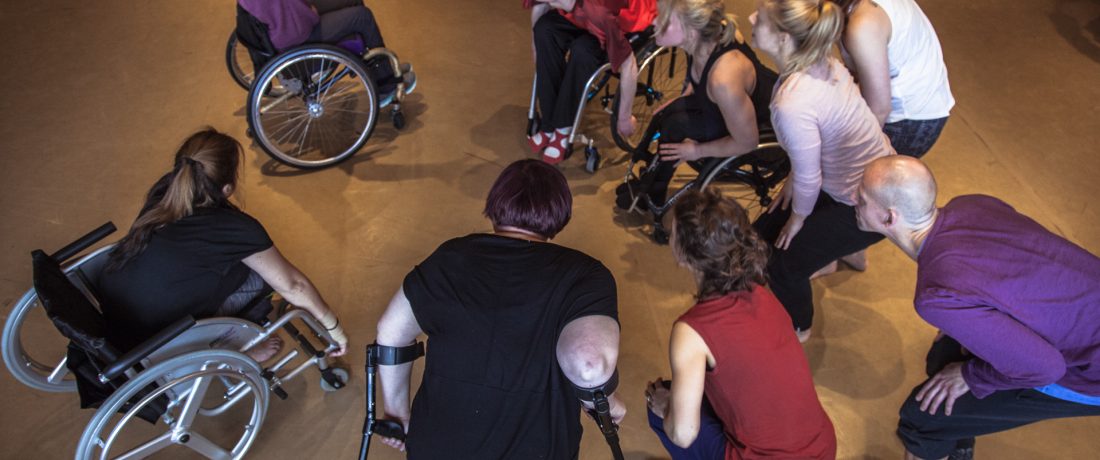
Body Sculptures
TARGET GROUP
Adults and children with or without visual impairmentsPARTICIPANTS
20DURATION
1.5 hoursORGANIZATION
Onassis StegiGoal - Essential question
In our role as mentors of the iDance Workshops we had the privilege to observe the full range, the wide variety of movement qualities across the various participants. This gave us, as well as the group, the opportunity to reflect on the ways in which resources can be used effectively to enhance learning and support creativity. We tried to instill to the group a basic working hypothesis, coming from Lenhart’s Enforcing Normalcy, Disability, Deafness, and the Body: The problem is not the person with disabilities, the problem is the way the normalcy is constructed to create the problem of the disabled person.
Familiarising oneself with the other the objective of this task is to physically explore tools to create movement phrases. Starting from stillness, dancers change positions using different planes in space, the main objective of this task is to introduce formal elements of transition in order to create movement phrases. Ten body positions continuously performed and randomly composed using qualitatively different transitions create the first movement phrase.
Learning outcomes: the creation of a movement phrase through stillness, transitions, possibilities of exploration, qualities and variations. From a set phrase to instant decision -making. Introduction to improvisational tools.
Description of task
The group is divided into mixed pairs. They both wear masks, covering their sight. They are prepared to use the sense of touch, kinetic consciousness and body memory.
Step 1: Take a position
Person 1 starts and takes a position, creating a specific form with her body, keeping it still for some time. Person 2 discovers this form-body sculpture using their hands, touching the body of the other in order to visualise the form and then copy the position. Person 2 recreates the position going back and checking in order to copy it in all details. This is considered position 1 that they both perform and recreate. They switch roles and continue with the task until they have created 10 different positions-sculptures in total.
Step 2: Movement Phrase
They construct a movement phrase using the movement material created through step 1. They repeat the positions making a sequence. They set this sequence and learn it very well while moving from one position to the next in a simple, direct and functional manner. They learn and explore the transitions from position to position and let the body move freely through repetition and practice.
Step 3: Movement Phrase and Change
On the set phrase they start applying changes in speed, dynamics, weight and energy levels. They do it with a constant flow and continuous or accelerating and slowing down. They apply impulses in the beginning of the movements and swings from one movement to the next. They make it lighter and then with more resistance. Applying as many dynamic-quality changes as they can.
Step 4: Phrase and Space
Moving the phrase through space. Apply locomotion: add walking in between and exploring ways that the movement will take them off balance resulting to a movement in space. Create a route and repeat it. Start making small changes in between.
Step 5: Explore
Explore further through improvisation and instant decision-making more possibilities of change relating to time and space.
